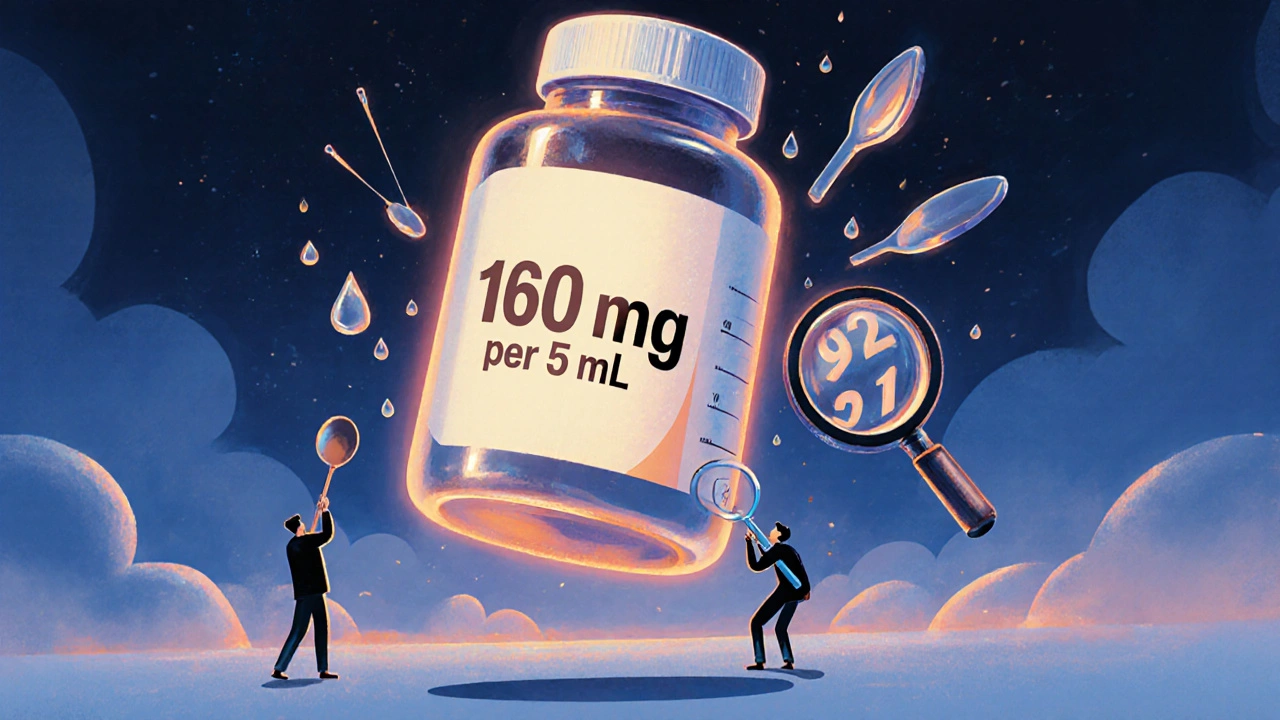
Getting the right dose of liquid medicine isn’t just about following the label-it’s about avoiding dangerous mistakes. Every year, over 1.3 million people in the U.S. are injured because of errors in measuring liquid medications. Most of these mistakes happen because people misread the label or use kitchen spoons instead of proper measuring tools. The good news? There’s a clear, simple way to read these labels correctly-and it starts with understanding what’s actually written on them.
What You’ll Find on a Liquid Prescription Label
Look at any liquid medicine bottle, and you’ll see three key pieces of information: the concentration, the dosage amount, and the total volume of the bottle. These aren’t just random numbers-they’re your safety checklist.
The concentration tells you how much medicine is in each milliliter. For example, you might see: 160 mg per 5 mL. That means every 5 milliliters of liquid contains 160 milligrams of the active drug. If your doctor prescribed 80 mg, you don’t take half the bottle-you take half of 5 mL, which is 2.5 mL. Confusing concentration with total dose is one of the most common errors.
The dosage instruction tells you how much to take at once. It will say something like: Take 5 mL every 6 hours. That’s your exact amount. Never guess. Never estimate. Always use the measuring device that came with the medicine.
The total volume is the size of the bottle-usually 118 mL, 237 mL, or 240 mL. This is not the dose. It’s just how much medicine is in the bottle. Some people think if the bottle says 240 mL, they should take 240 mL. That’s wrong. That’s the whole bottle. You might only need to take 5 mL per dose.
Why Milliliters (mL) Are the Only Unit You Should Trust
Older labels sometimes used teaspoons (tsp) or tablespoons (tbsp). You might still see them on some bottles, but they’re being phased out for a good reason: household spoons are wildly inaccurate.
A teaspoon from your kitchen might hold anywhere from 2.5 mL to 7.5 mL. A tablespoon could be 5 mL or 20 mL. That’s a 300% difference. The FDA and the National Council for Prescription Drug Programs (NCPDP) stopped allowing these units on new prescriptions because they cause too many errors. In one study, parents using teaspoons were twice as likely to give the wrong dose compared to those using mL.
Today, every legitimate prescription label must use milliliters (mL) only. If you see tsp or tbsp on a new label, ask the pharmacist. It’s likely an error.
How to Read Numbers on the Label Correctly
Numbers on liquid medicine labels follow strict rules to avoid deadly mistakes. Here’s what to look for:
- Always use a leading zero: Write 0.5 mL, never .5 mL. A missing zero can make someone think it’s 5 mL instead of 0.5 mL-that’s a tenfold overdose.
- Never use trailing zeros: Write 5 mL, never 5.0 mL. The extra zero can make someone think the dose is more precise than it is, leading to confusion or extra doses.
- Space between number and unit: It’s 5 mL, not 5mL. The space helps your brain separate the number from the unit, reducing misreads.
These rules aren’t suggestions-they’re based on research from Johns Hopkins that showed following them reduces 10-fold dosing errors by 47%. That’s nearly half the life-threatening mistakes prevented just by formatting numbers right.
What’s in the Measuring Device? Don’t Guess
Never use a kitchen spoon, syringe from another medicine, or a shot glass. The bottle should come with a dosing device: a syringe, cup, or dropper. Always use that one.
These devices are made to match the label. If the label says 2.5 mL, the device will have a line for 2.5 mL. If it says 10 mL, there’s a mark for 10 mL. Some devices have both mL and tsp markings-but always trust the mL numbers. The tsp markings are there for reference only, not for dosing.
Check the device’s maximum capacity. Some are only good up to 5 mL. If your dose is 10 mL, you’ll need to fill it twice. Don’t try to estimate halfway. Fill to the 5 mL line, pour it out, then fill again.
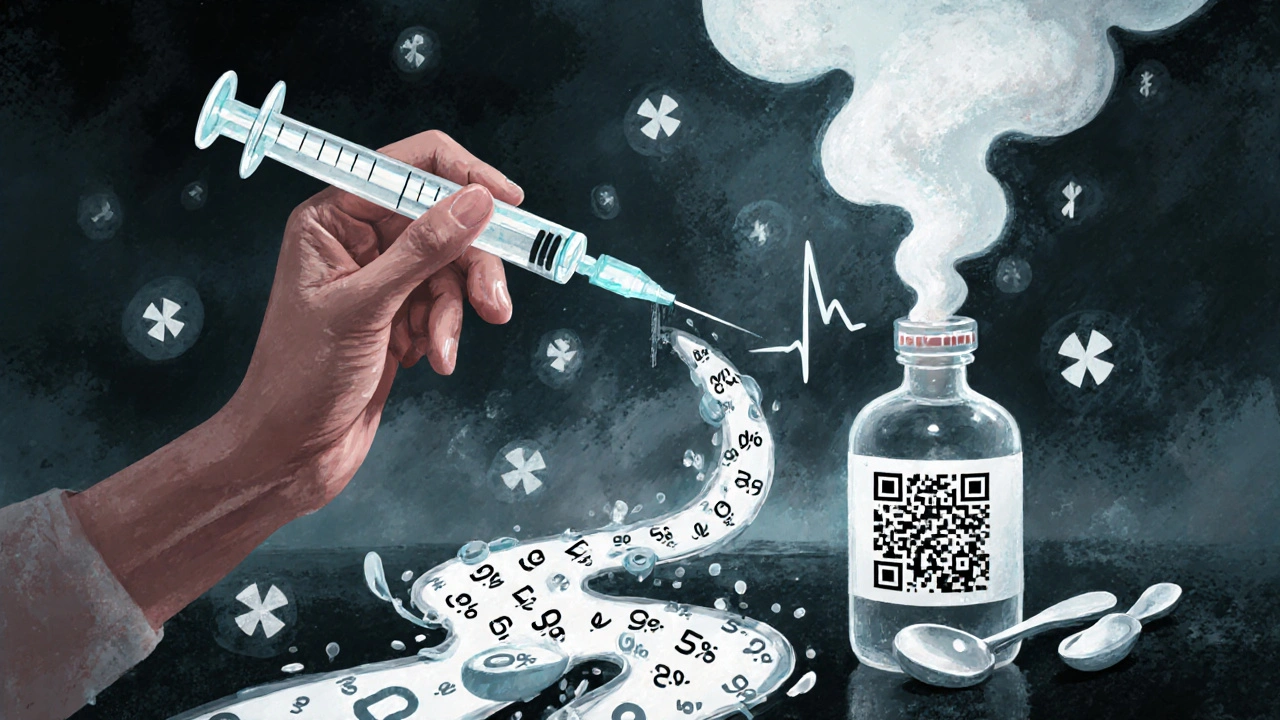
Concentration Confusion: The #1 Mistake
Here’s where most people get it wrong: they see the concentration and think it’s the dose.
Example: The label says 240 mg per 5 mL. The doctor prescribed 120 mg. The patient thinks: “The bottle says 240 mg, so I take half the bottle.” That’s wrong.
Correct approach: 240 mg is in 5 mL. So 120 mg is half of that-2.5 mL. You don’t take half the bottle. You take half of the 5 mL dose.
This mistake happens over and over. Reddit threads, pharmacy reviews, and patient surveys all show this as the top confusion point. If you’re unsure, ask the pharmacist to show you: “How much is 120 mg in mL?” They’ll show you on the syringe.
What If the Label Doesn’t Make Sense?
If you’re confused, don’t guess. Don’t assume. Don’t wait until the next dose.
Call the pharmacy. Ask: “Can you explain the dose on this label?” Most pharmacists are trained to help with this. They can walk you through it over the phone or even send a picture of the correct measurement.
Some pharmacies now offer video instructions via QR codes on the label. Scan it with your phone. You might see a short clip showing exactly how to fill the syringe. Amazon Pharmacy and McKesson’s Medly already use this. It’s becoming more common.
Teach-Back: The Best Way to Be Sure
One of the most effective tools for preventing errors is called the “teach-back” method. After the pharmacist explains the dose, ask them: “Can you watch me measure it?”
Then, actually measure the dose in front of them. If you do it right, they’ll say yes. If you make a mistake, they’ll correct it right then. Studies show this reduces dosing errors by 63%.
It’s not embarrassing. It’s smart. And it’s your right as a patient. Pharmacists expect it.
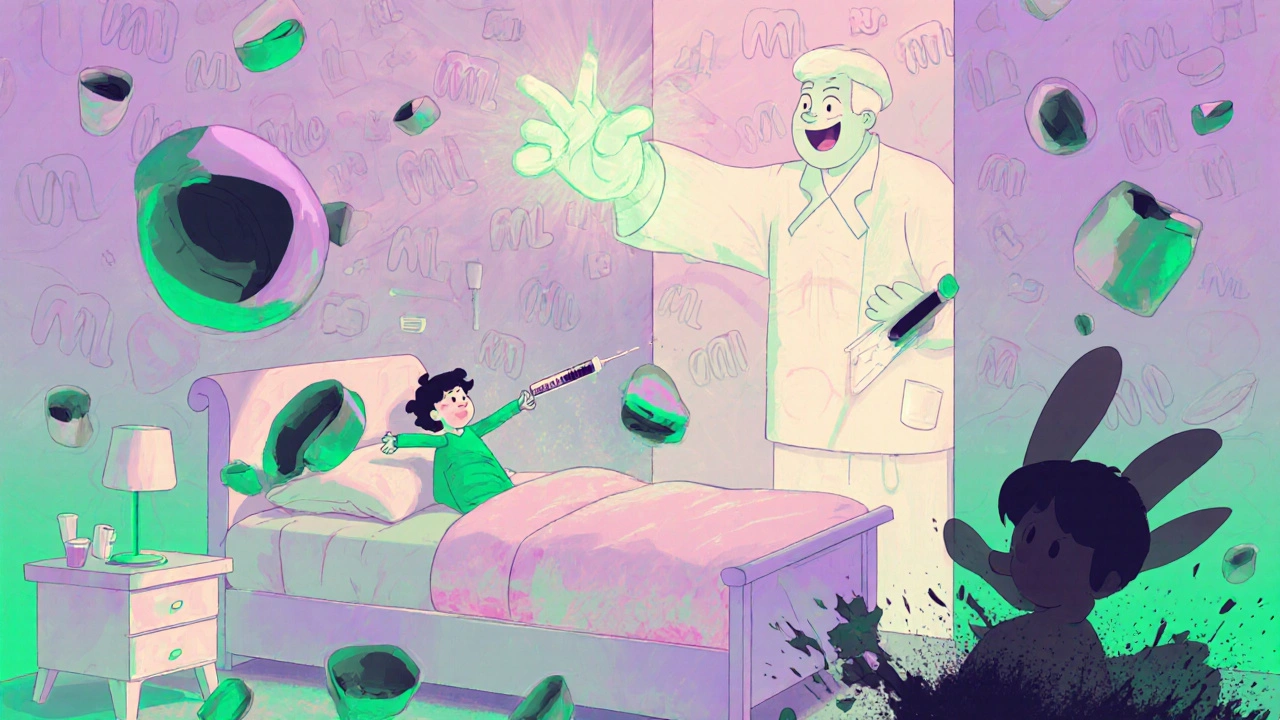
Who’s Most at Risk-and Why
Children under 12 make up 75% of liquid medication users. That’s why these rules exist. But adults are at risk too, especially those with low health literacy. Only 12% of U.S. adults can confidently understand medical instructions.
Older adults, non-native English speakers, and people with vision problems are more likely to misread labels. That’s why the NCPDP now requires minimum 10-point font and high-contrast printing on labels. Still, not all pharmacies follow this yet.
Low-income families are 23% more likely to use kitchen spoons because they don’t have access to proper measuring tools. If that’s you, ask the pharmacy for a free dosing cup or syringe. Most will give you one.
What’s Changing in 2025 and Beyond
The FDA is pushing for even more safety. By 2025, all new liquid medications must include visual pictograms on the label-simple drawings showing how to fill the syringe or cup. A 2022 study showed this cuts errors by 37%.
Pharmacies are also starting to use smart packaging. Some bottles now have QR codes that link to video instructions. Others have built-in dose counters. These aren’t common yet, but they’re coming fast.
Medicare and Medicaid are starting to tie reimbursement to labeling accuracy. Pharmacies that don’t follow the rules could lose funding. That means better compliance across the board.
Final Checklist: Before You Give the Dose
Before you give any liquid medicine, run through this quick list:
- Is the dose written in mL? (No tsp or tbsp)
- Is there a leading zero for doses under 1? (0.5 mL, not .5 mL)
- Is there a trailing zero? (5 mL, not 5.0 mL)
- Is the concentration clearly stated? (e.g., 160 mg per 5 mL)
- Are you using the device that came with the bottle?
- Have you measured the dose in front of someone-or at least double-checked with the label?
If you answered yes to all six, you’re safe. If any answer is no, stop. Call the pharmacy. Ask for help. It’s better to be late than wrong.
Can I use a kitchen teaspoon to measure liquid medicine?
No. Kitchen teaspoons vary in size from 2.5 mL to 7.5 mL, making them dangerously unreliable. Always use the measuring device that came with the medicine. Even if the label says “1 teaspoon,” convert it to 5 mL and use the mL marking on the syringe or cup.
What if the label says 5.0 mL? Should I give 5.0 or just 5 mL?
Give exactly 5 mL. The trailing zero (.0) is incorrect on prescription labels and can cause confusion. The FDA and NCPDP require doses to be written as 5 mL, not 5.0 mL. If you see 5.0 mL, ask the pharmacy to confirm the correct dose-it may be a labeling error.
How do I know if I’m giving too much or too little?
Compare the concentration to the prescribed dose. For example, if the label says 125 mg per 5 mL and your doctor ordered 62.5 mg, you need half of 5 mL-that’s 2.5 mL. If you’re unsure, use the teach-back method: ask the pharmacist to watch you measure it. Never rely on memory or estimation.
Why do some labels show both mL and tsp?
It’s for reference only. The official dose is always in mL. The tsp markings are there because some older patients are familiar with them, but they’re not for dosing. Always follow the mL number. The teaspoon equivalent is approximate and should never override the mL measurement.
What should I do if the dosing device is broken or missing?
Go back to the pharmacy. They’re required to provide a proper measuring device at no cost. Never substitute with a kitchen spoon, dropper from another medicine, or a regular cup. If you’re in a hurry, ask for a free oral syringe-they’re small, accurate, and easy to carry.

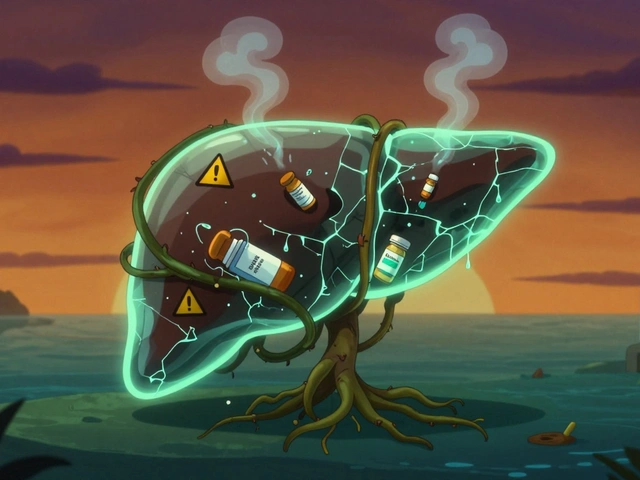
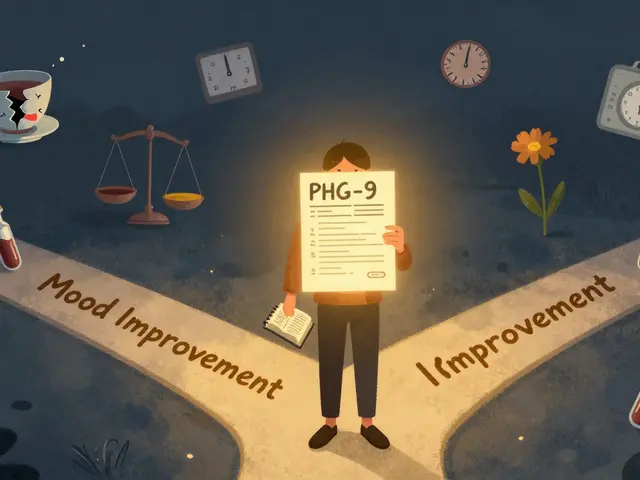
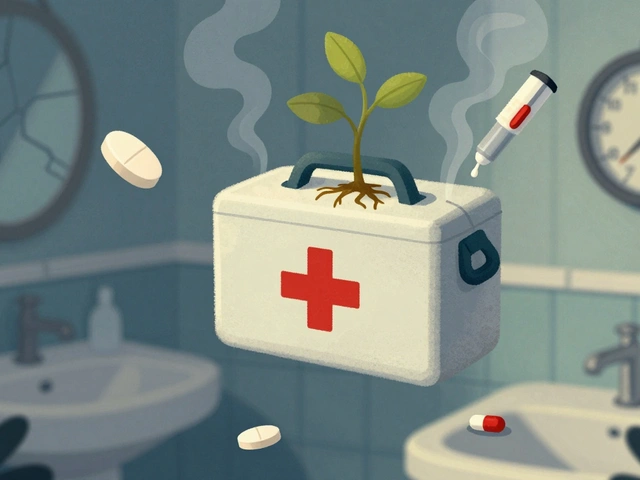


12 Comments
Just saved this for my kid’s meds. 🙌 I used to eyeball it with a spoon until my niece almost got overdosed. Now I always use the syringe and double-check the mL. Life-changing info. 📉💊
/p>This is so important. I work in a pediatric clinic and see parents struggle with this every single day. The leading zero rule? Non-negotiable. I wish every pharmacy printed it in bold. 📋✨
/p>USA still letting pharmacists mess this up? In my country we don’t even have tsp on labels anymore. This is basic safety. If you can’t read a label, you shouldn’t be giving medicine. Period.
/p>The distinction between concentration and total volume is profoundly underappreciated in public health communication. The statistical correlation between misinterpretation of mg/mL ratios and adverse pediatric events is statistically significant at p<0.001. Further standardization is warranted.
/p>Bro. This is the kind of shit that saves lives. I used to think ‘5 mL’ and ‘5.0 mL’ were the same-until my cousin’s baby got too much Tylenol. Now I’m the guy who corrects people at the pharmacy. You want to live? Read the damn label like it’s your job. 🔥
/p>It’s remarkable how such a simple protocol-leading zeros, no trailing zeros, spacing between number and unit-can reduce life-threatening errors by nearly half. The evidence is robust, and yet adoption remains inconsistent. A systemic failure, really.
/p>lol why u guys make big deal? In India we just use spoon and its fine. Who care about ml? My grandma gave medicine to 5 kids with spoon and all alive. U Americans overthink everything. 😒
/p>Actually, the FDA does not mandate spacing between number and unit. This is a recommendation from NCPDP, not a legal requirement. You’re conflating guidelines with regulations.
/p>Man I read this whole thing on my phone while waiting for my kid’s prescription. Honestly? I felt smarter. No jokes. Just used the syringe for the first time ever. No more guessing. Thanks whoever wrote this.
/p>if you dont got the syringe just ask for one. they give it for free. dont use a spoon. i seen people use a butter knife to measure. its wild.
/p>Wow. Another feel-good article that ignores the real problem: lazy parents and underfunded pharmacies. This isn’t about labeling-it’s about accountability. Someone should be fined for handing out meds without a measuring device.
/p>Wait so if the label says 5.0 mL but the syringe says 5 mL, do I trust the syringe or the label? I’m confused now.
/p>